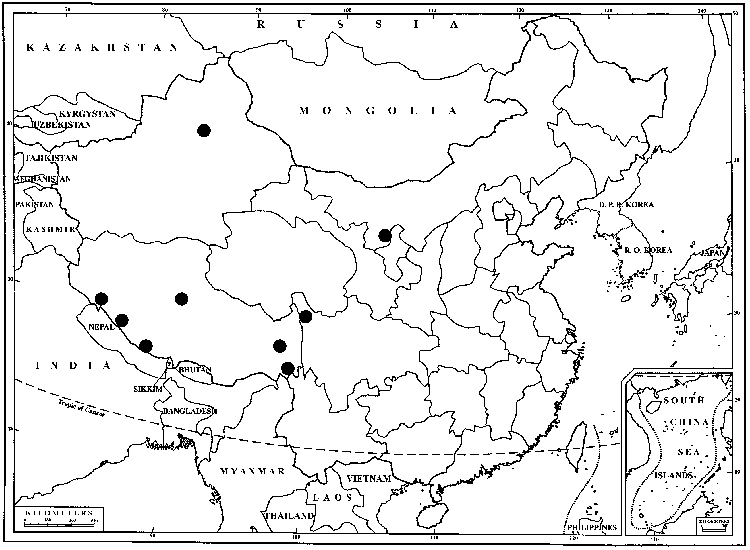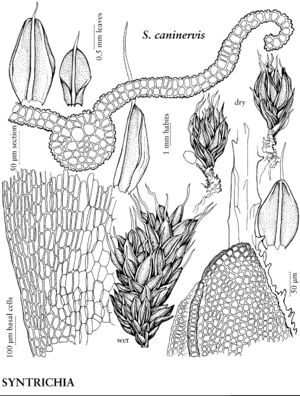Syntrichia caninervis
J. Proc. Linn. Soc., Bot., suppl. 1: 39. 1859,.
Stems 3–20 mm. Leaves infolded and imbricate, not to weakly twisted around stem when dry, erect-spreading when moist, ovate-spatulate, 1–2.5 × 0.6–1.2 mm, 2-stratose or thicker, occasionally with scattered 1-stratose patches; margins revolute for the entire length of leaf, entire; apices acute to acuminate; costa excurrent into a serrate, hyaline awn that often broadly hyaline at base, brown or blackish, strongly papillose; basal-cells abruptly differentiated, narrower toward the margins; distal cells rounded, polygonal, or quadrate, 8–13 µm, with 4–6 low papillae per cell. Specialized asexual reproduction absent. Sexual condition dioicous. Seta 6–15 mm, brown. Capsule red, 2.5–3.2 mm, straight or slightly curved, with a distinct neck; operculum 1.5–2mm, red; peristome 0.7–1 mm, the basal membrane about 1/2 the total length. Spores 7–8 µm, lightly papillose.
Habitat: Soil, deserts and steppe, often forming extensive carpets
Elevation: moderate to high elevations
Distribution

Alta., B.C., Ariz., Calif., Colo., Idaho, Mont., Nev., N.Mex., Oreg., Utah, Wash., Wyo., s, sw Asia (Afghanistan), sw Asia (Iran), sw Asia (Lebanon), sw Asia (Russia), sw Asia (Turkey), n Africa
Discussion
Syntrichia caninervis is most common in the colder deserts and steppes of the flora area, particularly in the Mojave and Great Basin deserts and the Columbia Basin. It can be confused in the field with S. ruralis, but good field distinctions for S. caninervis include the blackish or olive green color, the imbricate, weakly twisted leaf stance when dry, and the back of the costa showing no trace of red and often having a frosty appearance because of the stellate papillae. Microscopically, S. caninervis is unique with its combination of 2-stratose laminae, non-bulging cell surfaces, and costal cross-sections with sub-stereid cells.
Selected References
None.
Lower Taxa
"entire" is not a number.
